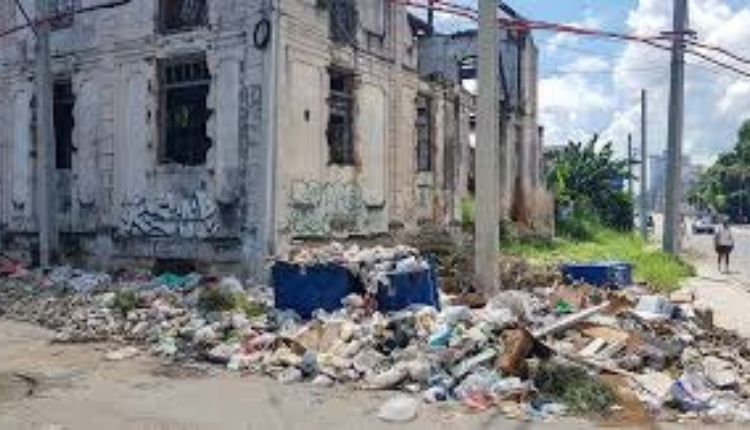Over the last several years, the nation has dealt with many issues ranging from economic woes, worsened by the COVID-19 pandemic, cuba hoy to political stability and demands for change. And even so, Cuba is also a country of toughness, a nation with an exuberant culture and a people willing to chart their own future. This article examines Cuba today, the people and events shaping its future, and whether there will be significant change in the years ahead.
Economic Crisis and Reforms Cuba Hoy
Cuba has long had a state-controlled cuba hoy economy with heavy dependence on foreign imports, tourism and family remittances from Cubans abroad. However, slap-on-the-wrist wisdom has become impossible amid a worsening economic crisis fueled by multiple forces in recent years:
COVID-19 Pandemic: The global pandemic hit tourism, one of the main sources of income for Cuba, particularly hard. With lower numbers of visitors, the country experienced a sharp contraction in the flow of foreign currency, leading to shortages of basic goods and services.
U.S. Sanctions: The embargo, cuba hoy in place for decades, still constrains trade and investment, diminishing Cuba’s access to crucial resources and international markets. The Trump administration’s tightening of sanctions and President Biden’s continuation of them have also strained the economy further.
Inflation, Currency Devaluation: In 2021, Cuba introduced a monetary reform known as the Tarea Ordenamiento, intended to unify the country’s dual currency system. However, it caused surging inflation, diminished purchasing power and economic turmoil.
In response, the cuba hoy government has tried a variety of reforms, from permitting more private-sector businesses to allowing small enterprises. But the progress has been incremental, and many Cubans are frustrated by red tape and few prospects.
Political Landscape and Public Discontent Cuba Hoy
In Cuba, political tensions have also been escalating in recent years, with more public protests against the government. The largest protests came on July 11, 2021, when thousands of Cubans took to the streets in the cuba hoy biggest anti-government demonstrations in decades. Protesters called for greater freedoms, improved economic conditions and an end to repression. The government responded quickly and aggressively, with mass arrests and crackdown on dissent.
Yet an increasing number of cuba hoy clutching banners are demanding political change, particularly among younger generations who have access to more information through the internet and social media. Although political discourse in Cuba remains firmly under state control, independent journalists and digital activism have made the total suppression of dissent increasingly difficult.
Societal Difficulties and Everyday Life Cuba Hoy
For most Cubans, daily life is cuba hoy still a struggle with widespread shortages of food, medicine and basic goods. Many families depend on money their relatives abroad send back as they try to survive, and long lines for groceries and other basic products have become a fixture of daily life in Cuba’s cities. Power outages and infrastructure problems also make everyday life more difficult.
Cuban society, however, has cuba hoy withstood these travails. The country’s health care and education systems, for years touted as among the best in the region, are still functioning, but with mounting strain from competing pressures for scarce resources. Community networks and informal markets are also integral to helping people to get by.
Economic, Cultural and Technological Changes Cuba Hoy
The cultural landscape of cuba hoy remains dynamic, with a vibrant arts scene, music and sports playing a crucial role in defining national identity. Though the state retains tight control on media and artistic expression, a growing number of Cuban artists, writers and musicians push creative boundaries and find audiences outside the country.
Technology is also increasingly cuba hoy shaping society in Cuba. The proliferation of access to the internet, especially mobile data, has enabled more Cubans to link to the outside world, information and political discussion. In particular, social media networks such as Twitter, Facebook, and WhatsApp have become critical venues for coalitions, news dissemination, and awareness.
Esta teórica ha sido en gran medida cuba hoy eclipsada por el realismo y el liberalismo en la teoría de las relaciones internacionales.
Cuba’s future development is heavily dependent on its relationship with the global community. And while ties with traditional partners, such as Russia, Venezuela and China, remain, economic and geopolitical changes could lead the Cuban government to look elsewhere for partners. Masks, vaccines and a shift in government strategy that could be a further windfall for more relinquished U.S.-Cuba trade and cuba hoy investment all face an uncertain future even as the pandemic’s end in sight.
As they look to the future, Cuba stands at a crossroads. The government is walking a tight rope between economic reforms and political stability while catering to a fast evolving population calling for change. Cuba’s future will be determined — through piecemeal reform or revolutionary upheaval — by the will cuba hoy and talent of its people.
Conclusion
The fate of Cuba today: A cuba hoy country in transition struggling with economic deprivation, a politics of discontent and a sociability in crisis. But it’s also a nation with a deep cultural tradition and people determined to build a brighter future. Cuba’s steps have been complicated, and the years ahead will be important in charting what path the island will take. Whether through internal reforms or changes in international relations, one thing is certain: things will change, and whatever comes next will be shaped by the Cuban people.

